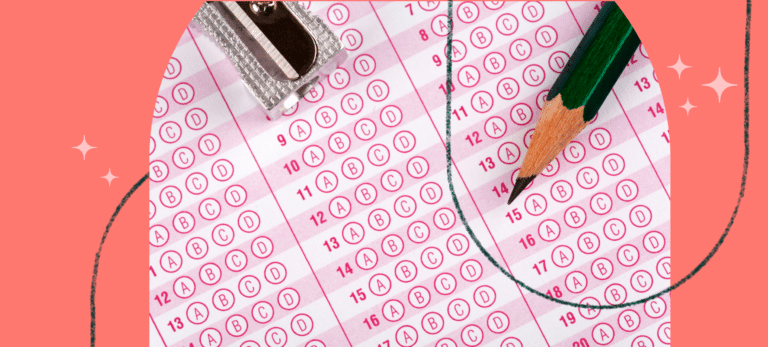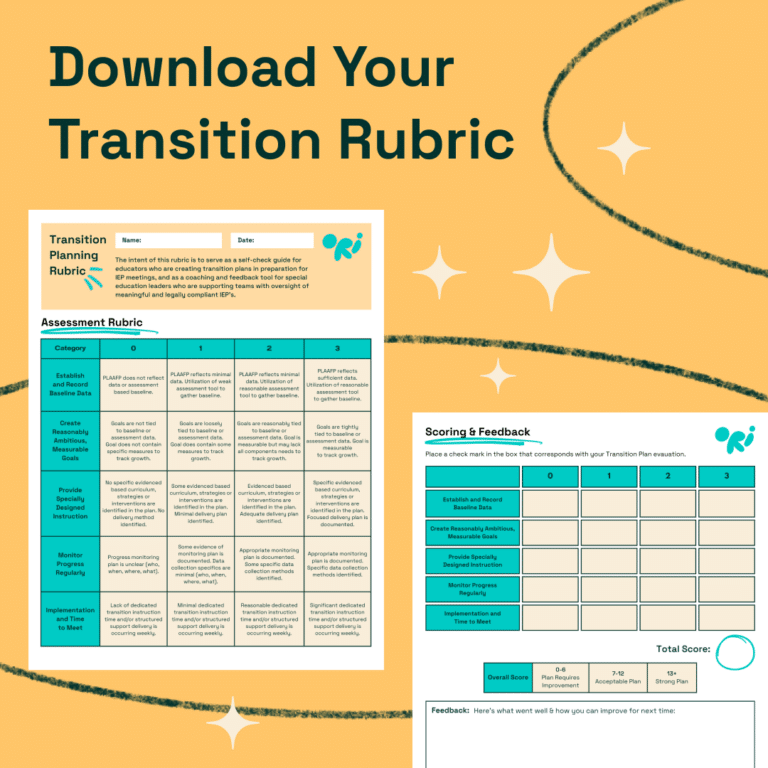


Assessment is a foundational tool in education which helps to identify students’ strengths, areas of need, and the best strategies to support their learning. In the context of special education, it can serve a multitude of different purposes. Chief among those are: screening, determining eligibility, IEP development, instruction planning, and evaluation (Pierangelo and Giuliani 2006, via NASET).
For students with disabilities, traditional assessment methods have often failed to capture the full extent of their abilities and learning potential. These conventional assessments typically focus on a narrow range of skills, primarily measuring academic performance through standardized test formats that may not accommodate the diverse needs of learners with disabilities.
Recognizing this gap, the period from 1990 to 2010 marked a significant step in the evolution of alternate assessments in special education. This era was characterized by important legislative changes in the U.S. and the development of innovative assessment approaches designed to offer a more inclusive and equitable evaluation of student performance.
This article briefly touches on the milestones in this 20-year period before exploring the nuanced definitions of standardized and non-standardized assessments in special education. We then present three crucial developments in approach to non-standardized (or alternate) assessment and how they have proven beneficial to students with special educational needs.
Note: “Non-standardized assessment” and “alternate assessment” are used interchangeably throughout.
1990-2010: A brief history of alternate assessments in special education
(Hager et al. 2005, Quenemoen 2008, Thurlow 2008)
In order to be able to talk about non-standardized assessments, it is important to first understand what differentiates them from their standardized counterparts.
Standardized assessments are crafted with the broad population in mind, ensuring that they can be widely applicable across diverse groups. A hallmark of these assessments is their uniform administration and scoring procedures, which guarantee consistency in how the tests are conducted and evaluated. They are norm-referenced, meaning that an individual’s performance is compared against a common standard, which facilitates an objective measurement. This objectivity is further underscored by the quantifiable results produced by standardized assessments, providing clear, numerical data on performance.
Non-standardized assessments are usually tailored for specific educational contexts, highlighting their adaptability to meet individual needs and goals. Unlike standardized assessments, these are criterion-referenced, measuring an individual’s performance against a specific set of criteria rather than comparing it to a broader norm. As a result, they boast flexible administration and scoring, which allows for a more personalized approach to evaluation. This also implies a more subjective measurement that is often judgment-based, relying more on qualitative analysis and the discretion of the evaluator.
An interesting perspective on standardization which goes beyond the standardization/non-standardization binary is offered by Hager et al. (2005). They suggest that standardization is a necessary component of every assessment, including alternate assessments, in order for it to be considered effective.
Hager et al. justify this dual need based on the fact that, on the one hand, a degree of standardization allows for assessments to be interpreted by an outsider not familiar with their specific context, while on the other hand individualization permits accommodating a wider range of abilities and performance levels. Alternate assessments should therefore ideally strike a balance between standardization and individualization.
In their study, Hager et al. go on to propose a model for assessments in special education which aspires to balancing these two aspects, suggesting a standardized “set of specific target tasks with measurement procedures and scoring criteria for each”, from which an IEP team can then select those most relevant to the particular student and their needs and thus tailor the assessment to the disability of the student.
Our Transition Planning Rubric is designed to support district leaders and educators in guiding their teams towards excellence in transition planning.
It provides comprehensive criteria that cover the breadth of transition planning, from gauging student engagement to evaluating post-secondary goals and services.
Expand your team’s capabilities and improve the success of IEP meetings.

We are witnessing an ever-evolving landscape for special education assessment which increasingly emphasizes flexibility and inclusivity. The push for the inclusion of non-standardized educational strategies into the school curriculum is one manifestation of this.
Three approaches to alternate assessment in particular are worth highlighting for their nuanced understanding of student learning and achievement: Dynamic assessment, Curriculum-based assessment (CBM), and Alternate assessment based on modified academic achievement standards (AA-MAS).
Dynamic assessment is based on the premise that traditional, “static” assessments, where responses are recorded at a single point in time “without any attempt to intervene in order to change, guide, or improve the child’s performance” (Turziel 2000), may not fully capture a student’s learning capabilities. A more interactive, teaching-assisted assessment is proposed as an alternative which can lead to more accurate and useful information for educators.
At its core, dynamic assessment prioritizes learning potential over accumulated knowledge. It is grounded in Vygotsky’s sociocultural theory, particularly the concept of the Zone of Proximal Development (ZPD), which posits that the distance between a child’s current ability and their potential development can be bridged through mediation and support. The mediational strategies that are employed are said to naturally mirror the learning process, and so can be integrated into real-life contexts more easily.
On the practical level of special education interventions, a teacher can apply dynamic assessment by incorporating mediated activities focusing on improving memory, attention and problem-solving skills. This is done by presenting a task that is just above the student’s ability and assisting them in completing it, adjusting the level of help based on the student’s responses and gradually reducing support as the student demonstrates a sufficient level of competence.
The research highlighted by Turziel comparing traditional and dynamic assessment methods indicates that, through mediation and individualized teaching strategies, dynamic assessment exploits and provides a more accurate reflection of children’s learning potential and is therefore more effective in enhancing cognitive modifiability, including in students with special educational needs.
Curriculum-based measurement (CBM) is a formative assessment designed to assess students’ academic progress against the general curriculum through direct and frequent observation and measurement. It applies “standardized observational procedures for repeatedly sampling performance on core reading, writing, and arithmetic skills” (Deno 2003).
As such, CBM combines elements of standardized and non-standardized assessment. “Curriculum-based” refers to the fact that the materials used for the assessment are taken directly from the teaching materials used in the classroom. The assessment involves tests that are brief, timed, and given on a regular weekly or monthly basis. The scoring for these tests often focuses on quantifiable measures such as the total word count in a writing exercise or the number of words read correctly in a reading exercise.
CBM has broad applications which can support a wide range of educational decisions, including screening, evaluating interventions, eligibility for remedial and special programs, and monitoring inclusion in mainstream programs. Note that this assessment approach can be applied to a wider educational context as well as being effective for targeted groups of students, including students at risk for academic failure and those receiving special education supports.
A study by Stecker & Fuchs (2000) demonstrates CBM’s effectiveness in improving student achievement through detailed, data-driven instructional planning. For instance, it was found that teachers who utilized CBM for instructional adjustments based on individual student data achieved superior outcomes compared to those who did not tailor their instruction as closely to CBM data.
Introduced as a flexibility option under the NCLB and IDEA in 2007, the alternate assessment based on modified academic achievement standards (AA-MAS) was developed specifically with students with disabilities in mind.
It constitutes “a coordinated approach to ensuring that students with disabilities have an appropriate assessment that matches their current needs … while not giving up the high standards and expectations promoted by the NLCB” and, by extension, the general curriculum (Thurlow 2008). In practice, AA-MAS would allow schools to count up to 2% of the total U.S. student population (or about 18% of special education students) as proficient on modified achievement standards under federal accountability systems.
This led to state educators across the U.S. having to develop an AA-MAS either by changing their existing general assessment (e.g. by using simpler language or shortening passages) or developing an entirely new assessment to meet the requirement for tests to validly measure achievement against modified standards for eligible students.
The implementation of AA-MAS has had significant implications for both assessment development and instructional practices for students with disabilities across the country. It raised the bar for accessibility standards in assessments, with the incorporation of modifications such as the use of visuals to support text and simplified language.
These changes would allow students with disabilities to demonstrate their knowledge and skills in a manner that was previously not possible, and would help promote a culture of accountability for educators, who would have to ensure that students with disabilities also made progress in the general curriculum.
There are four key components of a successful transition curriculum. Explore them in detail and learn about the role they play in creating a comprehensive transition curriculum.

Assessments identify strengths, areas of need, and strategies to support learning, including screening, IEP development, and instruction planning.
Non-standardized assessments are criterion-referenced, flexible, and rely on qualitative data, tailored for specific educational contexts.
Dynamic assessment prioritizes learning potential over accumulated knowledge, using mediation to reflect children’s learning capabilities more accurately.
The discussion of assessments in special education over the last few decades presents a push-and-pull between the importance of maintaining a common standard for all students based on the general curriculum on the one hand, and the need to make modifications for students with special needs that do not fit into the traditional paradigm on the other.
Balancing the rigorous expectations of a standard curriculum with the flexibility required to accommodate the diverse range of learning challenges faced by students with special needs is no easy task, and would explain why progress towards developing alternate assessments has been slow and uncertain. Nevertheless, the intention remains clear: to ensure that all students, regardless of their abilities, have a fair and accurate measure of their educational achievement in order to reach their full potential.
Ori Learning’s Transition Curriculum offers a comprehensive solution for supporting your school or district’s special education programs, with a consistent set of high-quality instructional materials which are designed with student engagement in mind. Collaboration boards and interactive polls allow for students to share their thoughts and react to their peers in real time, while multiple question types and interactive drag-and-drop activities offer teachers flexibility in how to conduct assessments.
Receive custom support backed by rich industry experience that can help you tackle your strategic goals at scale. Request a free demo of our platform to experience first-hand its powerful accommodation and translation features, automated reporting tools, and intuitive design.
